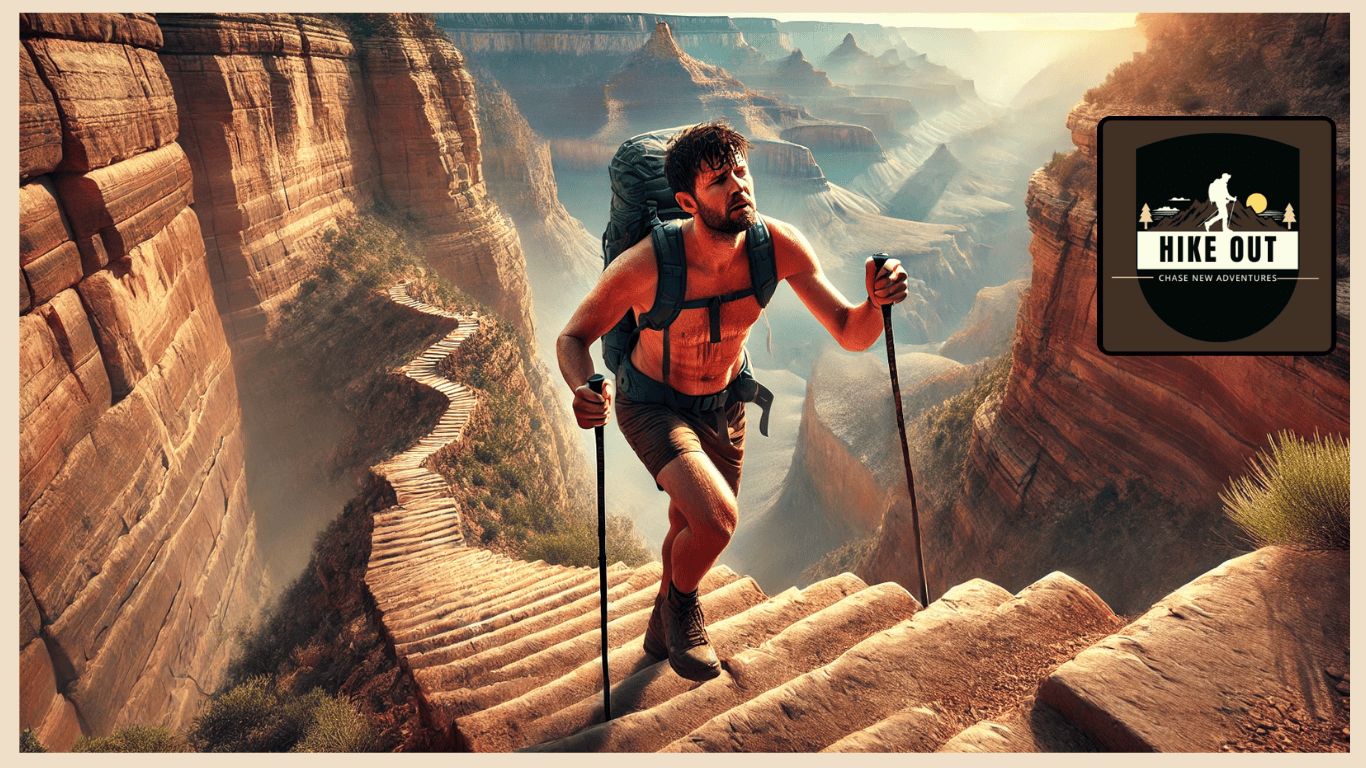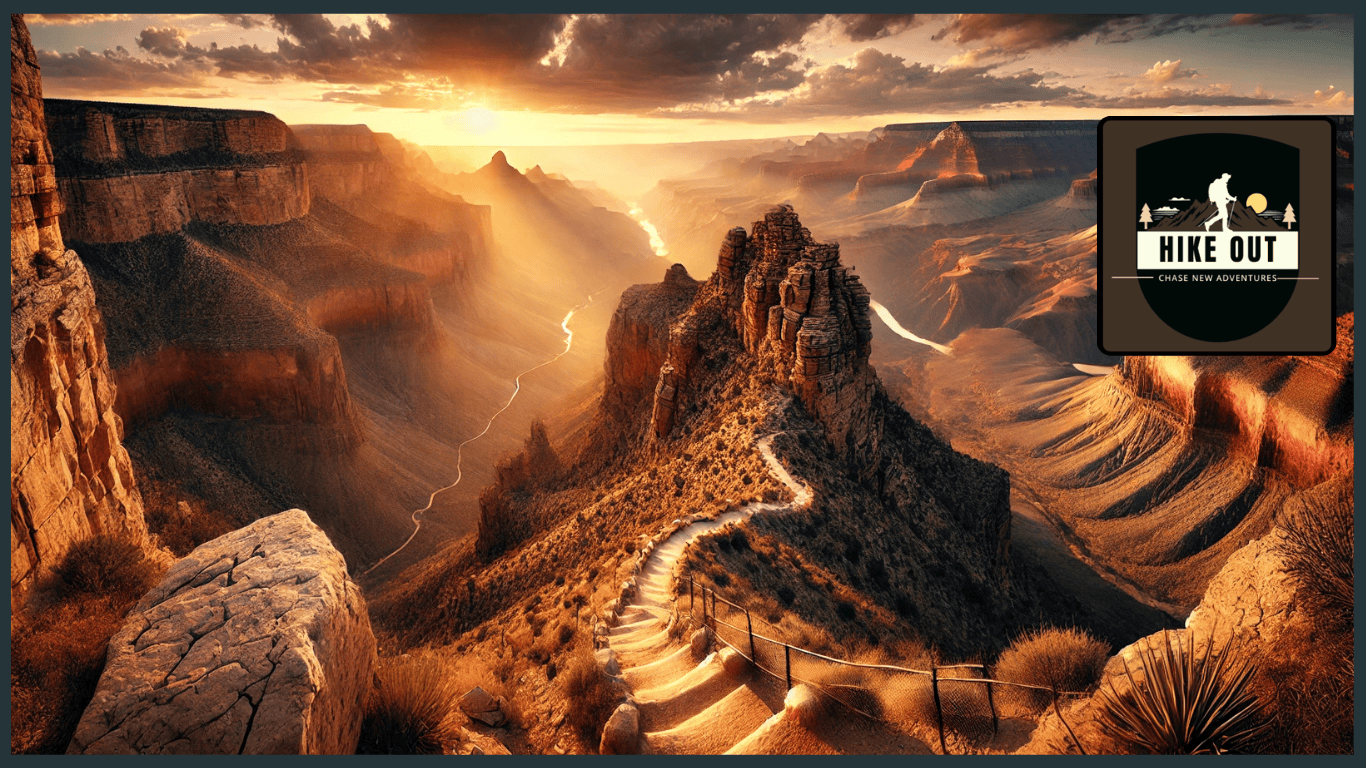Embarking on a Grand Canyon Rim to Rim hike is a challenging yet rewarding adventure that offers breathtaking views and a profound sense of accomplishment. This guide provides essential information and expert tips to help you prepare for this epic journey.
What Should You Know Before Hiking the Grand Canyon Rim to Rim?
The Rim to Rim hike spans approximately 24 miles, descending from the North Rim via the North Kaibab Trail and ascending to the South Rim using the Bright Angel Trail. This trek involves significant elevation changes and requires thorough preparation.
Why the Grand Canyon Rim to Rim Hike is a Bucket List Adventure
The Grand Canyon Rim to Rim hike is one of the most rewarding yet challenging treks in the world. This adventure takes you through the heart of the Grand Canyon National Park, where you’ll experience stunning panoramic overlooks, diverse geological formations, and extreme elevation changes. Whether you’re a seasoned hiker or preparing for your first rim-to-rim adventure, this guide will provide you with essential trail insights, gear recommendations, safety tips, and expert strategies to help you conquer this legendary hike.
Choosing Your Route: North Kaibab to Bright Angel Trail
The most recommended route for a rim-to-rim hike is from North Kaibab Trail to Bright Angel Trail. This 24-mile trek provides a thrilling mix of steep descents, breathtaking canyon depths, and challenging switchbacks.
- Starting Point: North Kaibab Trailhead (Elevation: 8,241 feet)
- Ending Point: Bright Angel Trailhead (Elevation: 6,860 feet)
- Total Distance: 24 miles
- Elevation Loss: 5,761 feet
- Elevation Gain: 4,380 feet
- Time Required: 10-14 hours (One Day) or 2-3 Days (Multi-Day Hike)
- Best Time to Hike: May – October
Essential Preparation: Training & Physical Readiness
A rim-to-rim hike is significantly more demanding than a standard trail trek. Proper training is crucial for success.
- Endurance Training: Long-distance hikes (15+ miles) with elevation gain.
- Strength Training: Knees, hips, and core workouts for handling steep descents and ascents.
- Heat Acclimation: Since inner canyon temperatures can exceed 100°F, practice hiking in warm conditions.
- Altitude Adjustment: If possible, train at high elevations to prepare for the North Rim’s 8,000+ feet altitude.
- Reverse Climbing: Practice steep ascents since the Bright Angel Trail climb is intense.

{A fearless hiker takes on the challenging switchbacks of Bright Angel Trail. Push your limits with HikeOut Adventures!.”}
Packing Smart: Gear Checklist for a Successful Hike
Your choice of gear can make or break your Grand Canyon hiking adventure. Here’s what you need:
Backpack & Hydration:
- Daypack (20-30L) for a one-day hike or 50L+ for overnight trips.
- Hydration System: 3-4 liters of water capacity via hydration bladders or bottles.
- Electrolytes & Liquid IV to prevent dehydration.
Clothing & Footwear:
- Lightweight, moisture-wicking layers (avoid cotton).
- Trekking Poles for added stability on steep sections.
- Trail Running Shoes or Hiking Boots with solid grip.
- Cooling Towel for heat regulation.
- Hat, Sunglasses, & Sunscreen for sun protection.
Food & Nutrition:
- High-Calorie Snacks: Trail mix, protein bars, salty snacks, waffles.
- Dehydrated Meals for overnight camping.
- Energy Gels & Electrolyte Mix for quick fuel.
Understanding the Trail Sections & Landmarks
Your rim-to-rim journey will take you through some of the most stunning and challenging landscapes in the Grand Canyon. Here’s what to expect:

[Follow the trail to adventure—discover the best Grand Canyon hiking routes with HikeOut Adventures!]
1. North Kaibab Trail to Phantom Ranch (14 miles, mostly downhill)
- Supai Tunnel (1.7 miles, 6,800 feet) – First shaded rest stop.
- Roaring Springs (4.7 miles, 5,220 feet) – Major water source.
- Cottonwood Campground (6.8 miles, 4,080 feet) – Overnight camping option.
- The Box – The hottest section of the hike; start early to avoid extreme temperatures.
- Phantom Ranch (14 miles, 2,480 feet) – A perfect midpoint rest stop for cold drinks and snacks.
2. Bright Angel Trail: The Ascent to the South Rim (9.5 miles, mostly uphill)
- River Resthouse (1.5 miles, 2,480 feet) – Start of the grueling ascent.
- Indian Garden (4.7 miles, 3,800 feet) – A shaded oasis with water and camping.
- 3-Mile Resthouse (6.5 miles, 4,748 feet) – Essential hydration break.
- 1.5-Mile Resthouse (8 miles, 5,729 feet) – Last major stop before the final climb.
- Bright Angel Trailhead (9.5 miles, 6,860 feet) – The rewarding finish!
Weather & Seasonal Considerations
The Grand Canyon’s climate varies drastically depending on the time of year:
- Spring (March-May): Cool temperatures, unpredictable snow at high elevations.
- Summer (June-August): Extreme heat (100°F+), dehydration risk.
- Fall (September-November): Ideal hiking conditions, moderate temperatures.
- Winter (December-February): North Rim closed due to snow, South Rim still accessible.
Permits & Lodging: Where to Stay
To camp or stay overnight, permits and reservations are required well in advance.
Phantom Ranch & Campgrounds:
- Phantom Ranch Lodge: Lottery-based booking system (13 months in advance).
- Bright Angel Campground: Backcountry permit required.
- Cottonwood Campground: First-come, first-served spots.
Lodging Options:
- South Rim: Bright Angel Lodge, El Tovar, Yavapai Lodge.
- North Rim: North Rim Lodge, Kaibab Lodge (May–October only).
Shuttle & Transportation: How to Get to the Trailheads
Since this is a one-way hike, transportation planning is crucial:
- Trans-Canyon Shuttle: Operates daily ($120 per person).
- Personal Shuttle & Car Swap Options.
- Closest Airports: Phoenix, Las Vegas, Flagstaff.
- Hiker Express Shuttle: Runs from Grand Canyon Visitor Center.
Safety Tips & Avoiding Common Risks
Hiking the Grand Canyon presents unique challenges, so staying prepared is essential.
- Start Early: Leave before 3 AM to avoid the deadly afternoon heat.
- Hydrate & Replenish: Water stations are available but carry extra in case of breakdowns.
- Beware of Heat Exhaustion: Signs include dizziness, nausea, and excessive sweating.
- Respect Right of Way: Mules > Hikers > Runners – step aside for mule trains.
- Stay on Trail: Loose terrain and rock slides can be dangerous.
- Use a GPS or Offline Maps: Navigation can be tricky in some areas.
Essential Resources for Your Grand Canyon Rim-to-Rim Hike
1. National Park Service: Official Grand Canyon Hiking Guide
Why Visit? The National Park Service (NPS) website is the most trusted, up-to-date source for Grand Canyon trail conditions, water availability, camping permits, and safety alerts. If you’re serious about hiking Rim-to-Rim, this should be your first stop.
🔗 Read the Official Guide Here
2. HikingGuy: Ultimate Rim-to-Rim Grand Canyon Hike Guide
Why Visit? This detailed guide offers a step-by-step breakdown of the hike, including best route options, insider trail tips, and must-know safety precautions. Whether you’re a first-timer or an experienced hiker, this guide helps you plan smarter.
🔗 Check Out the Full Hiking Guide
3. Wildland Trekking: Expert Advice & Guided Hikes
Why Visit? Wildland Trekking provides comprehensive planning tips for independent hikers while also offering expert-led guided hikes for those looking for a stress-free experience. Learn about gear recommendations, hydration strategies, and seasonal weather challenges in this well-researched guide.
🔗 Read Expert Hiking Advice
These resources will elevate your preparation, enhance your hiking experience, and ensure you stay safe while conquering the legendary Grand Canyon Rim-to-Rim hike. Happy trails! 🚶♂️⛰️🔥
Explore More Breathtaking Adventures
After conquering the Grand Canyon Rim-to-Rim hike, why stop there? Check out these incredible destinations that promise equally stunning landscapes and unforgettable experiences:
- 🌄 Experience Phoenix’s Best Viewpoint → Secrets of Dobbins Lookout: A View You Can’t Miss! – Climb to this iconic scenic lookout and soak in panoramic views of the city and surrounding mountains.
- 🏜️ Journey Through a Slot Canyon Like No Other → Unlock the Hidden Wonders of Buckskin Gulch: A Must-See Adventure! – Discover the longest, most mesmerizing slot canyon in the world, perfect for adventure seekers.
Each of these destinations offers awe-inspiring landscapes, thrilling trails, and a chance to experience nature’s wonders up close. Ready for your next adventure? Click the links above and keep exploring! 🚀✨
Final Thoughts: A Life-Changing Experience
Completing the Grand Canyon Rim to Rim hike is an unforgettable journey of endurance, strength, and adventure. The breathtaking views, the sense of accomplishment, and the raw beauty of nature make it a once-in-a-lifetime experience. Whether you hike it in one day or over multiple days, you’ll never see the Grand Canyon the same way again!
Frequently Asked Questions About the Grand Canyon Rim-to-Rim Hike
How long does it take to hike the Rim-to-Rim trail?
The Grand Canyon Rim-to-Rim hike spans 23.5 miles and typically takes 12 hours for well-trained hikers. With extreme elevation changes and intense heat, proper conditioning and hydration strategy are essential. (Wildland Trekking)
Do I need a permit for the Rim-to-Rim hike?
A backcountry permit is required only for overnight stays at Phantom Ranch or designated campgrounds. However, if you’re completing the hike in one day, no permit is needed. (USA Adventure Seeker)
What is the Rim-to-Rim-to-Rim (R2R2R) hike?
The R2R2R route is an ultra-endurance challenge, covering 48 miles round trip. It begins at the South Rim, descends to the Colorado River, ascends 6,000 feet to the North Rim, and then reverses the trek. (Fastest Known Time)
How many rims does the Grand Canyon have?
The Grand Canyon features four rims:
- South Rim – Most popular, open year-round.
- North Rim – Higher elevation, open May–October.
- West Rim – Known for the Skywalk experience.
- East Rim – Remote but offers breathtaking viewpoints. (Shaka Guide)
Is the Rim-to-Rim hike difficult?
Yes, the Rim-to-Rim hike is one of the most challenging hikes in the U.S. With over 5,000 feet of elevation gain and temperatures exceeding 100°F, it demands high endurance, strength, and preparation. (Skratch Labs)
Can you drive from the South Rim to the North Rim?
Yes, but it’s a 220-mile drive that takes 4.5 hours. The Desert View Drive along the South Rim provides scenic viewpoints en route. (National Park Service)
Which is the most scenic rim of the Grand Canyon?
The South Rim is the most visited and photogenic, featuring Hopi Point and Mather Point. However, the North Rim offers a rugged, less crowded experience with equally stunning views. (Grand Canyon)
Can I stay overnight at the bottom of the Grand Canyon?
Yes, Phantom Ranch provides overnight cabins and dormitories at the canyon’s base. Advanced reservations are mandatory due to limited availability. (National Park Service)
What is a good time for the R2R2R hike?
The 48-mile R2R2R hike takes elite ultra-runners 8-10 hours. Most hikers complete it in 12-16 hours or over two days. (Run Infinite)
What makes the Grand Canyon special?
The Grand Canyon is a UNESCO World Heritage Site, showcasing two billion years of geological history and one of the world’s most breathtaking landscapes. (National Park Foundation)
What is the fastest known time (FKT) for the R2R2R hike?
The current FKT for the Rim-to-Rim run (21 miles) is 2 hours, 39 minutes. Elite trail runners complete the full R2R2R route in under 6 hours. (Trail Runner Magazine)

